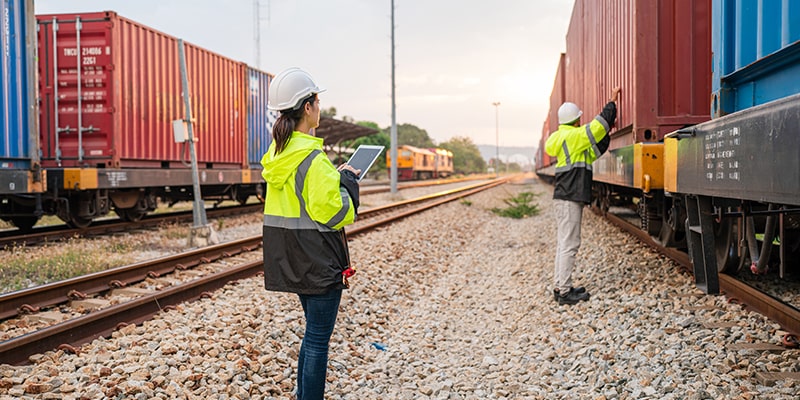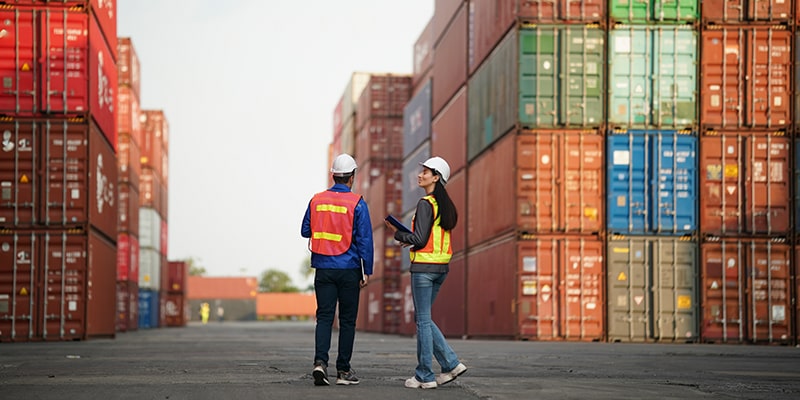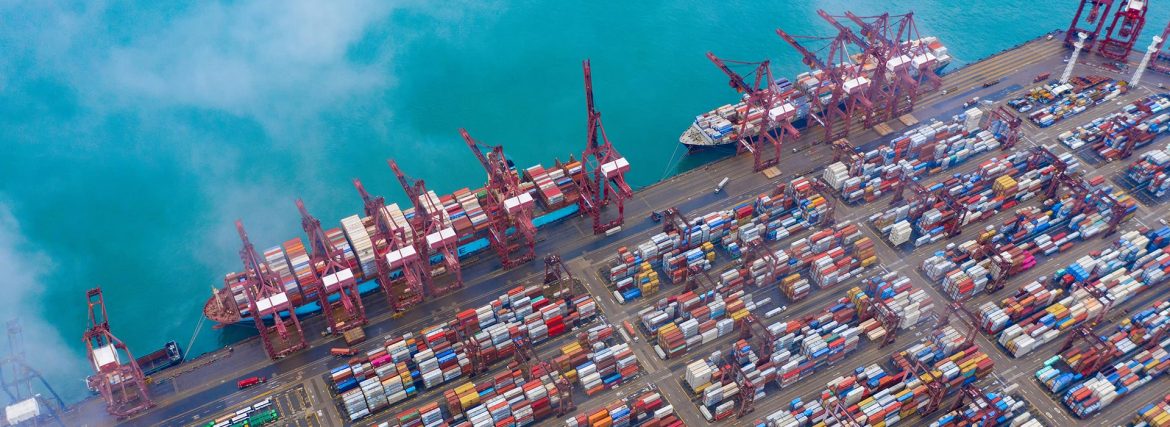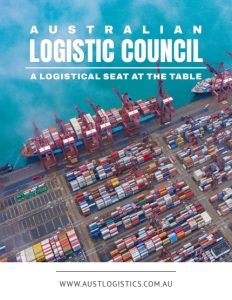A Logistical Seat at the Table
Driving a Unified Voice for a Resilient Supply Chain
Australia’s economy depends on its ability to move goods efficiently, safely, and sustainably across vast distances. From bustling ports and urban freight corridors to the long-haul trucking routes that knit the nation together, the freight and logistics industry is the backbone of productivity and competitiveness. Yet for decades, the sector remained fragmented, with stakeholders working in silos rather than as a unified force.
That changed in the early 2000s with the establishment of the Australian Logistics Council (ALC). Created to give the industry a collective voice, ALC today represents 45 leading organizations across the supply chain, including infrastructure owners, operators, road and rail service providers, insurers, consultants, retailers, manufacturers, and technology companies.
“Our core purpose has always remained the same,” explains Rachel Fadel, Head of Government and Industry Affairs at ALC. “We are here to improve the safety, productivity, efficiency, resilience, and sustainability of Australia’s supply chains. Everything we do is framed around those five pillars.”
A Seat at the Table
ALC operates as both a membership-based industry body and a trusted partner to government. The council includes a board of 23 members who determine its strategic direction, while associate members contribute to key conversations. ALC’s role is to advocate for what is best for the national economy, even when that means putting commercial interests aside.
“Freight is too important to be fragmented,” notes Policy Officer, Sam Karami. “Our members may compete commercially, but when it comes to national infrastructure and workforce challenges, collaboration is essential.”
To drive this collaboration, ALC convenes quarterly meetings that allow members to focus on specific elements of strategic direction, such as rail infrastructure or port access. It also organizes roundtables, summits, and annual awards ceremonies to address challenges and recognize industry leadership.
The upcoming ALC Summit carries the theme “Australia’s supply chains under pressure: solutions for a resilient future.” Sessions will explore the impact of economic, geopolitical, environmental, and workforce pressures — and highlight strategies to ensure the nation’s supply chain remains robust and competitive.
Advocacy and National Strategy
One of ALC’s most significant contributions has been its role in shaping the National Freight and Supply Chain Strategy, a federal initiative designed to guide the industry’s long-term growth.
“ALC worked very closely with the Department of Infrastructure to develop the strategy,” Fadel says. “It has clear actions, measurable KPIs, and a commitment to improving the last iteration. It is a strong example of government and industry coming together to achieve meaningful outcomes.”

Ongoing advocacy efforts focus on ensuring freight infrastructure is recognized as critical national infrastructure. ALC is also monitoring shifts in industrial land policy, particularly with responsibility moving from the Department of Infrastructure to Treasury. “Our concern is that prioritization will lean too heavily toward housing at the expense of freight,” Fadel warns. “Industrial land availability is fundamental to efficient supply chains, and that cannot be overlooked.”
Building the Future Workforce
Perhaps the most pressing challenge for the industry is workforce sustainability. With the average truck driver now 48 years old, the sector faces a looming skills gap. Workforce diversity is also a challenge, with women significantly underrepresented across many roles.
To address this, ALC launched Wayfinder: Supply Chain Careers for Women, a program designed to encourage greater female participation in the logistics workforce. One of its flagship initiatives is the Freight Heartland Tours, which give students, community groups, and future employees the chance to tour warehouses, ports, and logistics hubs.
“These tours are eye-opening,” Karami explains. “Even for people already in the industry, the chance to see such a range of facilities and operations in action is rare. For young people, it is an introduction to a sector that is dynamic, essential, and full of career opportunities.”
In parallel, ALC is working to harmonize driver qualifications across states, an effort that will improve workforce mobility and reduce red tape. Training and upskilling remain central to ALC’s workforce development agenda, ensuring the next generation of logistics professionals is equipped with the tools they need to succeed.

Safety, Efficiency, and Sustainability
Safety remains a top priority. ALC continues to support initiatives that reduce accidents, improve compliance, and promote a culture of responsibility across the supply chain. “Every worker deserves to go home safely,” Fadel emphasizes. “That principle underpins everything we do in this area.”
Efficiency and productivity are also guiding themes. With freight volumes expected to increase significantly in coming decades, the ability to move goods seamlessly between road, rail, air, and sea is critical. Investments in rail freight infrastructure and intermodal hubs are high on ALC’s advocacy agenda, as they promise to ease congestion, reduce costs, and lower emissions.
Sustainability, too, is front of mind. From reducing fuel use to exploring alternative energy sources, ALC’s members are committed to lowering the carbon footprint of logistics. The council actively encourages policies that balance economic growth with environmental responsibility.
The Decade Ahead
Looking toward 2025–2030, ALC is preparing a strategy document that will set out the organization’s priorities for the next five years. Early focus areas include:
- Workforce development: attracting and retaining talent through diversity programs, training initiatives, and harmonized qualifications.
- Infrastructure investment: ensuring freight remains a core priority in federal and state planning, and that industrial land is preserved for supply chain operations.
- Resilience and risk management: strengthening the ability of supply chains to withstand disruptions caused by global events, natural disasters, or geopolitical challenges.
- Technology adoption: supporting members as they embrace automation, digitalization, and new technologies to improve efficiency and transparency.
- Sustainability and decarbonization: aligning with Australia’s broader climate targets by driving down emissions in transport and logistics.
“The next decade will be transformative for freight and logistics,” Fadel concludes. “Our role is to make sure the industry’s voice is heard, its priorities are clear, and its contributions to the national economy are fully recognized.”
A Unifying Force for Australia
From its beginnings as an effort to bring a fragmented industry together, the Australian Logistics Council has become a unifying force for progress. Its ability to convene industry leaders, influence government policy, and champion workforce and sustainability initiatives has positioned ALC as an indispensable part of Australia’s economic future.
“Freight is not just about trucks, ships, or planes,” Karami reflects. “It is about connecting communities, supporting industries, and keeping Australia moving. That is why ALC exists — to ensure our supply chains are strong, resilient, and ready for the future.”
At a Glance
Who: Australian Logistic Council
What: The body that gives a collective voice for its members across areas within the logistics sector to help navigate supply chain issues and logistic concerns
Where: Canberra, Australia
Website: www.austlogistics.com.au




 This information will never be shared to third parties
This information will never be shared to third parties